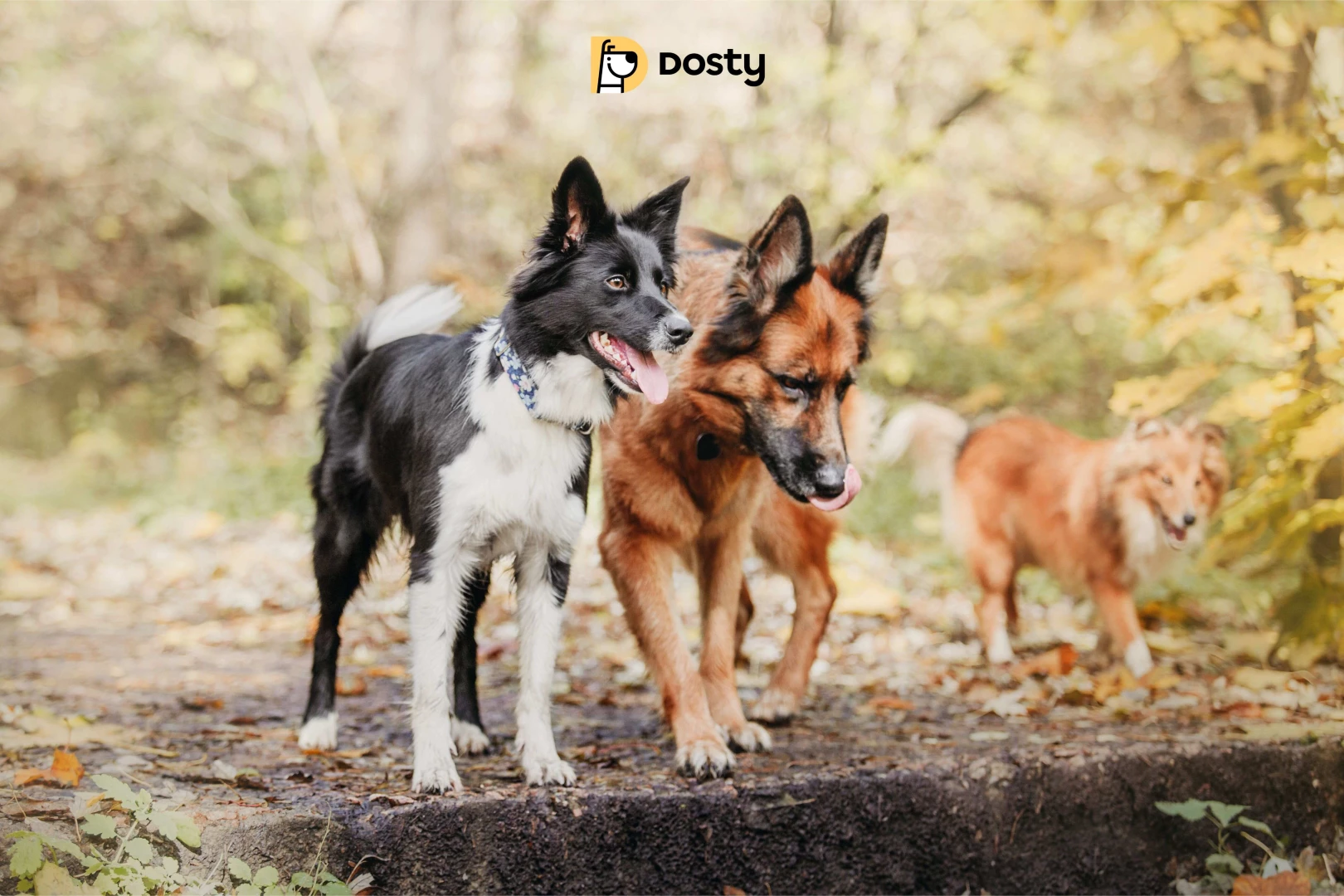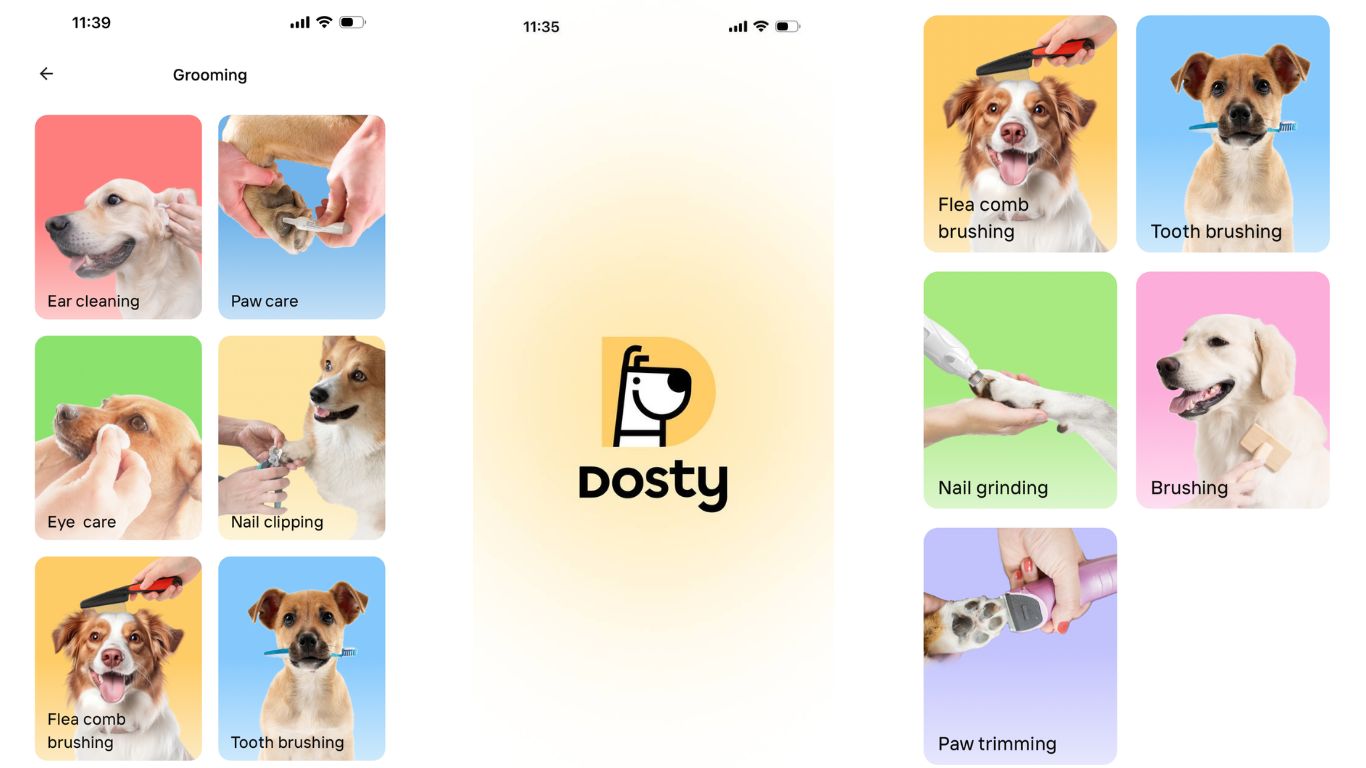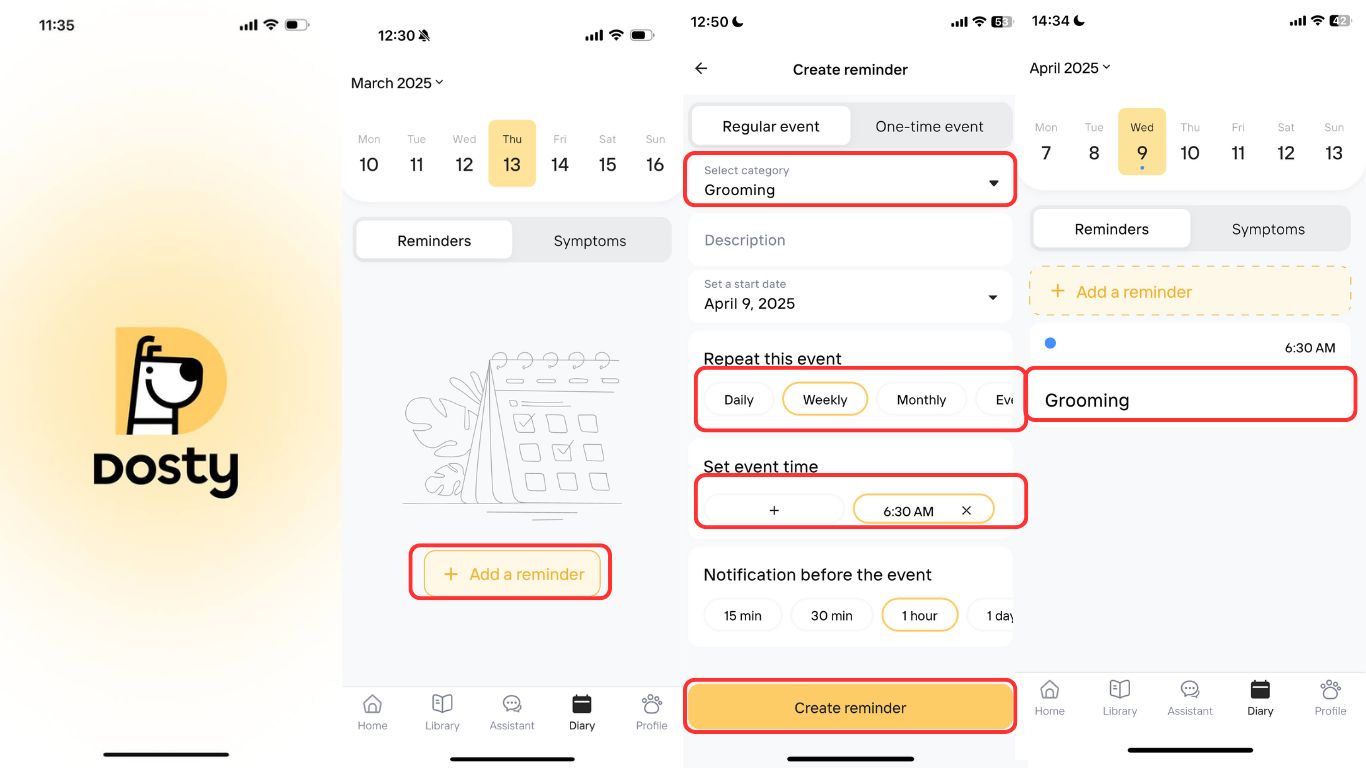On this page
Double-Coated Breeds: Managing Shedding and Grooming Challenges
Double-coated dog breeds are recognized for their lush, insulated coats and heavy seasonal shedding. This coat is an all-weather coat that works naturally with a dog's own heating system. Double coats are present in about 60% of northern and working breeds, and over 35% of dog owners around the world state that they struggle with controlling excess shedding in these dogs.
In double-coated dogs shedding peaks at more than 200% during seasonal transitions (spring and autumn) compared to baseline. Their thick undercoats can become matted and moisture-trapping without the right care, causing painful skin conditions.
Brushing and grooming need to correspond to the special needs of these coats, according to the American Kennel Club (AKC). Knowing how to take care of a double coated dog will help minimize shedding, mats and keep your dog healthy.
Are you sick of your pet shedding all over your furniture, clothes, and floors❓
With Dosty, managing your double-coated dog is a breeze, thanks to custom grooming reminders, personalized coat care tips, and seasonal reminders, you're in charge every month of the year.
What Is a Double-Coated Dog Breed?
A double-coated dog breed is a dog that has two layers of fur, a soft undercoat and a coarser outer coat. The undercoat insulates the dog, helping to stay warm and cool in extreme temperatures, while the outer coat protects your dog from rain, dirt, and harmful UV rays.
This coat conformation is typical of breeds that were originally developed for cold climates, Siberian Husky, Golden Retriever, Border Collie, German Shepherd included. The soft undercoat sheds throughout the year and the dogs "blow" their undercoat (coat change) twice a year, in the spring and fall.
“The double coat developed in working dogs, it’s nature’s way of helping regulate body temperature,” says Dr. Ashley Bourgeois, DVM, a veterinary dermatologist.
How Can I Tell If My Dog Has a Double Coat?
To see if your dog has a double coat, the fur should be separated and two layers should be apparent:
🟢 A soft, dense undercoat near the skin
🟢 A longer, harsh top coat, that lays over cottony white undercoat with coarse hair in the face.
Breeds such as Shiba Inus, Australian Shepherds and Labradors tend to have apparent double coats. Your veterinarian or groomer can help you determine if in doubt.
Do Double-Coated Dogs Shed More Than Other Dogs?
Yes, double-coated dogs shed more than single-coated ones. This is for the reason that they have a double layer of fur and undergo seasonal moult. During weather changes, particularly during the spring and fall, this dense undercoat is shed in large amounts to accommodate the temperature.
All dogs shed, but double-coated breeds throw fur in large quantities during such shedding seasons. Without regular combing, loose fur can quickly mat or irritate your pet’s skin.
When Do Double-Coated Dogs Shed the Most?
Double-coated dogs shed the most:
- During shedding in the spring when they drop their winter undercoat
- In the fall when a new insulating coat develops
- For wet or hot climates where the light shedding is year round
If the dogs live indoors with air conditioning and electric lighting, they may shed more uniformly throughout the year.
How Should I Groom a Double-Coated Dog?
Grooming a double-coated dog is about managing both layers of fur without ruining the coat's natural function. The whole point is to push the loose undercoat without cutting the top protective coat.
Use an undercoat rake to free and remove dead hair from the undercoat. Then, use a slicker brush to flatten the top layer and brush out any lingering debris. Bathe your dog every 4–6 weeks with a gentle, conditioning shampoo. Dry the coat thoroughly, with either a dry towel or a low-heat dryer, to prevent moisture buildup that can result in hot spots.
Never shave a double-coated dog. The coat serves as protection against heat and cold, and shaving can lead to improper re-growth, or sunburn.
“I see an awful lot of skin issues in dogs that have been shaved unnecessarily,” says Dr Kate Bruce. “It is often preventable by regular brushing.”
❗Prevent painful skin problems and coat regrowth that grows in the wrong direction.
Dosty’s grooming tutorials teach you how to groom your double-coated dog in step-by-step detail.
How Can I Reduce Shedding in My Double-Coated Dog?
Controlling double-coated dog shedding begins with regular grooming. Brushing is the number one way to prevent loose fur from accumulating around your home. Daily brushing is recommended at the height of shedding seasons. The rest of the year brush at least three to four times a week.
A balanced diet containing omega-3 fatty acids, biotin and zinc can also contribute to decreased excessive shedding. Nutrients contribute to good skin barrier health and hair that’s strong and shiny. Those dogs that eat low-quality kibble are more likely to shed due to flaky skin and hair that breaks more easily.
Ensure that your dog is well-hydrated, and particularly in warm climates, since dry skin equals more shedding. Similarly, with grooming, you can book a professional grooming appointment each season to have a deep deshedding treatment each spring and fall.
How Often Should I Brush a Double-Coated Dog?
You should brush your double-coated dog about three to four times a week. Daily brushing is highly recommended during periods of heaviest shedding in spring and fall. Regular brushing helps:
- Remove loose undercoat before it becomes matted
- Help control unwanted shedding around your house
- Spread oil more evenly for less oily skin
Brush the dense undercoat with an undercoat rake and maintain the texture of the topcoat by brushing with a slicker brush. Be patient and gentle with long-haired breeds, especially.
Regularly brushing your double-coated dog is difficult to keep up with, but not doing so can result in painful mats and nonstop shedding❗
Smart reminders from Dosty ensure you keep up with grooming schedules personalized to your dog’s needs.
FAQs About Grooming Double-Coated Dogs
1. Can I shave my double-coated dog in hot weather?
No, shaving disturbs its ability to regulate temperature and can cause your pet to become overheated or sunburned.
2. What kind of brush works best for double coats?
For heavy shedding, follow with an undercoat rake as a finishing tool.
3. Does bathing reduce shedding?
Yes, particularly followed by drying and brushing. It aids in removing loose fur from the undercoat.
4. Can I trim certain areas?
Yes, a little light clipping around the paws, ears, and rear is okay, but never shave the coat.
5. How can I keep my home clean during the shedding season?
Brush your pet often, put washable covers on furniture, and vacuum with a pet hair attachment.
Conclusion – How to Keep a Double-Coated Dog Healthy and Comfortable
Double-coated dog breeds offer protection from the elements, but that beautiful coat needs consistent care. Shedding can be overwhelming, but it’s manageable with the right grooming habits, tools, and nutrition.
Regular grooming keeps your dog cool in warm weather, prevents painful mats, and supports healthy skin. A well-maintained coat reduces shedding inside your home and helps your dog stay comfortable and happy year-round.
👉 Keep that double coat healthy, comfy, and under control with Dosty App!




